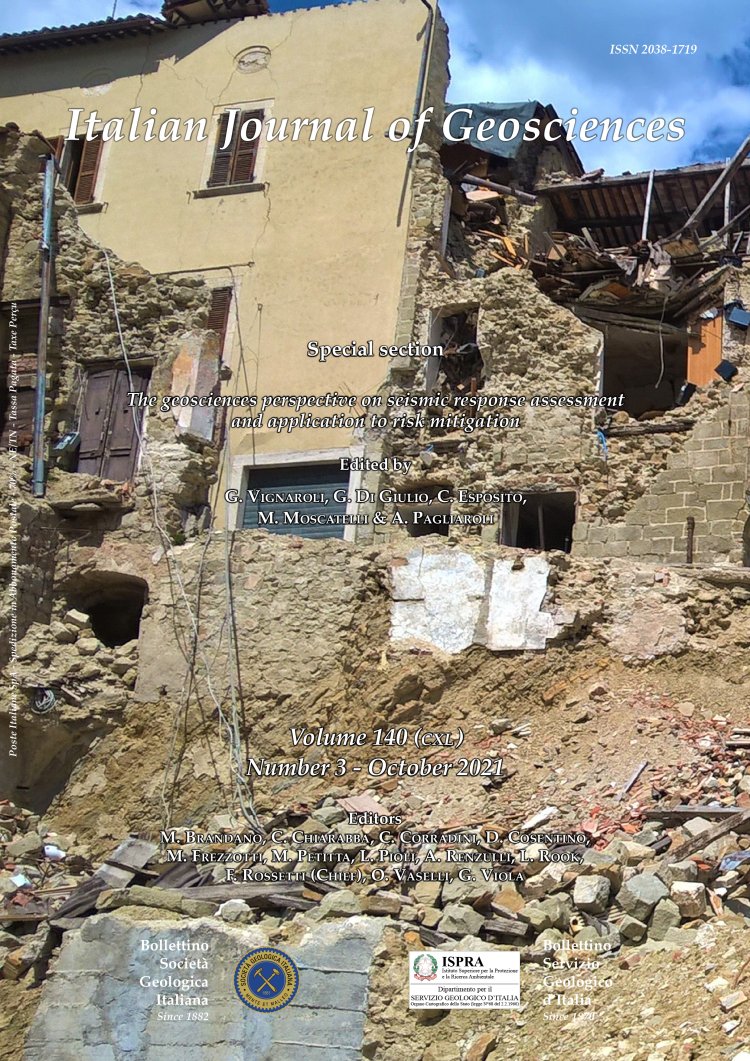
Geochemical approach to the genesis of the Buyukkizilcik (Afsin) barite deposit, SE Turkey
Nevin Konakci (1) & Ahmet Sasmaz (1)
(1) Firat University, Department of Geological Engineering 23119 Elazig Turkey
Corresponding author e-mail: asasmaz@gmail.com
DOI: https://doi.org/10.3301/IJG.2021.04
Volume: 140 (2021) f.3
Pages: 422-437
Abstract
This study investigated the geochemistry, mineralogy, fluid inclusion, trace and rare earth element (REE) contents and Pb, O and S isotope results of the barites formed together with Pb-Zn deposits in the region. The Buyukkizilcik barite mineralization is located in the west part of Afsin, Turkey and it can be traced through 14 kilometers in NE-SW direction within the Yoncayolu and Cayderesi Formation. The thickness of these mineralized areas reaches 7-8 m, especially in the middle and eastern part of the ore zone. Mineralization is represented by barite-antimonite-fluorite in the western part, pyrite-chalcopyrite in the middle part and galena-sphalerite in the eastern part of the mineralized zone. Fluid inclusion studies indicate that these mineralizations are formed in the epithermal phase of hydrothermal period, with liquids having 4.5 to 2% NaCl salinity values and temperatures of 105 °C to 121 °C. The barite samples were collected from Buyukkizilcik mineralization area for analysis of major oxides, trace elements, and rare earth elements (REEs) using inductively coupled plasma mass spectrometry (ICP-MS). According to the results of the analysis, it is seen that total trace element contents change from 163 to 20458 ppm and ∑REE contents are between 4.31 and 14.4 ppm. The chondrite- normalized REE patterns of the studied barites exhibit trends decrease from LREE towards HREE and have negative Ce and negative Eu anomalies. The 206Pb/204Pb; 207Pb/204Pb and 208Pb/204Pb isotope values of galena vary between 17.20 and 19.96%o; 14.1 and 16.2%; and 35.4 and 41.9%, respectively. These isotope results show that these mineralizations were originated from upper crust materials. The δ34S values in Buyukkizilcik mineralizations range from 8.2 to 14.4‰. The barite mineralization was formed by hydrothermal activity and that the δ34S values indicate an epithermal phase. The δ18O values of barites are between 17.0 and 18.5‰ and these δ18O values show that the origin of the water displayed in the hydrothermal activity is magmatic and/or magmatic mixed with meteoric water. All results indicate that the barite mineralization was deposited as vein-type by hydrothermal solutions that are transported along fractures and fault zones within the Malatya Metamorphic complexes.
Keywords
Get Full Text